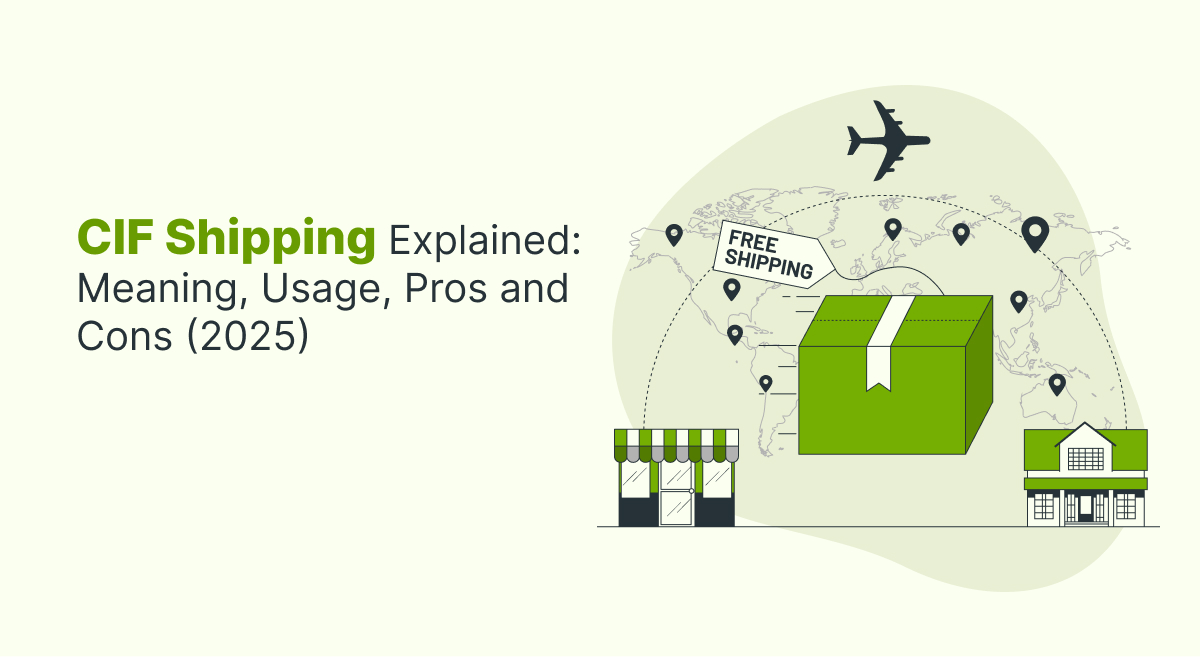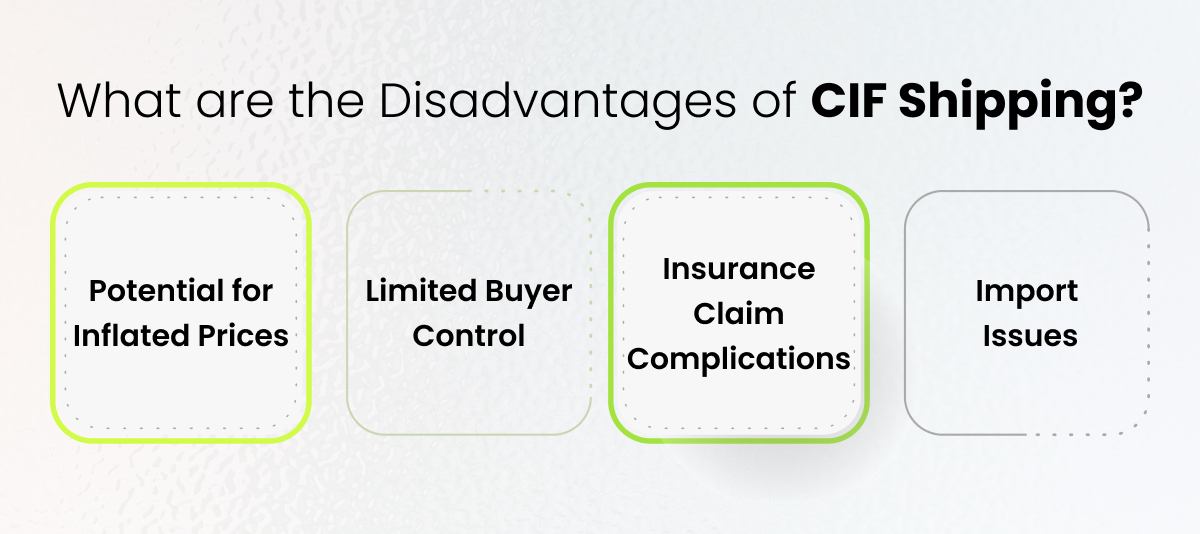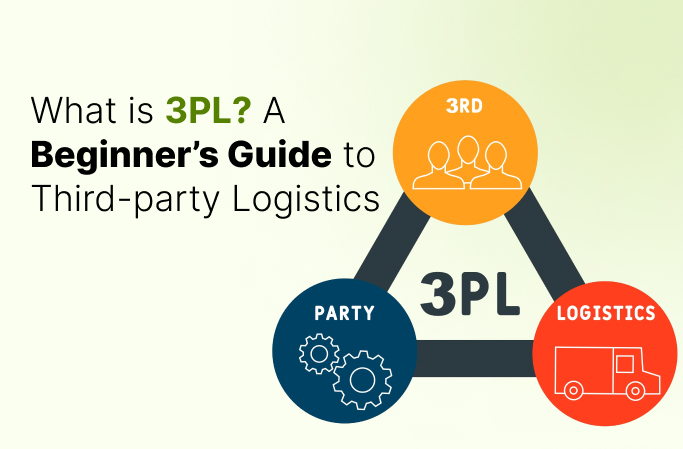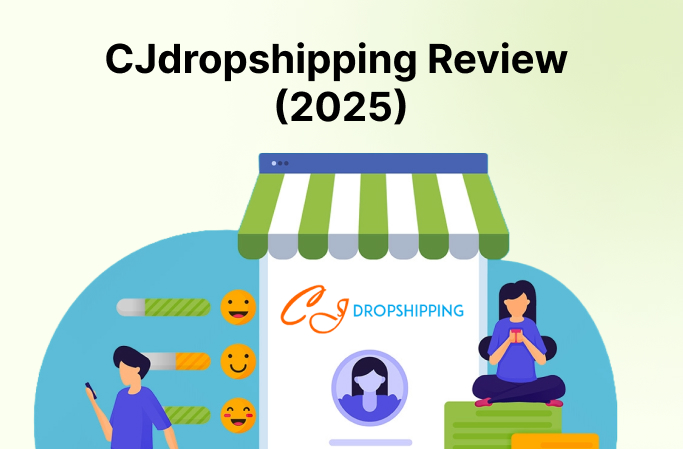CIF Shipping Explained: Meaning, Usage, Pros and Cons (2025)

Running an e-commerce business isn’t as easy as you think. Even after months of planning and execution, challenges are inevitable in this market. And shipping remains one of the most concerned aspects of the entire e-commerce business, especially when it comes to understanding international shipping policies. CIF shipping (Cost, Insurance, and Freight) is one such shipping agreement that every e-commerce business should be better aware of before entering the market. So, what exactly is CIF shipping?
CIF shipping is basically a shipping agreement between the buyer and seller, usually used by small-scale businesses for international shipping. It is an ocean freight shipping method that reduces administrative burdens and simplifies financial planning.
According to the WTO (World Trade Organization), the value of global trade has surged with an average of 6% every year since 1995. In such a situation, understanding international shipping agreements, such as CIF, is necessary for e-commerce businesses dealing with international clients. So, here’s a beginner guide to understanding CIF shipping and related terms.
What is a CIF Shipping?
Cost, insurance, and freight (CIF) shipping is a mutual shipping agreement and one of the 11 International Commerce Trade Terms, often known as Incoterms. These shipping agreements were introduced by the International Chamber of Commerce (ICC), a nongovernmental body overseeing inter-country trade.
CIF is quite similar to carriage and insurance paid to (CIP), but the main distinction is that it is limited to only sea and waterway shipments. Under the CIF shipping terms, the seller is responsible for paying all the shipment costs to the buyer’s port. These costs include handling, transportation, insurance, and freight.
The incoterms explain the responsibilities of both seller and buyer regarding international shipments. As said, the seller is responsible for all costs incurred during the shipment’s transit to the buyer’s designated port.
Risk and cost transfer may occur in different scenarios. For instance, the risk transfers to the buyer (in case of loss or damage) when the shipment is loaded onto the vessel, although the buyer is still responsible for contracting insurance.
Let’s crack it down with an example:
Let’s say Walmart ordered 2,000 smart TVs from Samsung and signed a CIF agreement. Samsung loaded the shipment onto the ship. After loading, the risk of loss is transferred from Samsung to Walmart. However, Samsung has already paid for the insurance, freight, and other shipping charges until the shipment reaches the buyer’s designated port.
Now, suppose the ship caught fire, and the cargo was damaged by fire and water. As the CIF agreement is still in place, the buyer (Walmart) can claim insurance to cover the cost of damage or loss.
Understanding the Cost, Insurance, and Freight (CIF) Incoterm
The Cost, Insurance, and Freight (CIF) shipping contract terms clearly state the liabilities for both the buyer and the seller. The CIF requires the seller to pay for the minimum level of insurance, as per Clause (C) of the Institute Cargo Clause.
The minimum level of insurance coverage should be at least 110% of the value of the products on the sales contract—“CIF+10%.” The insurance should be in the same currency as stated in the contract.
CIF contracts are typically used for bulk and non-containerized waterways cargo shipments. The agreement terms clearly define where the seller’s responsibilities will be transferred to the buyer.
Here’s CIF Shipping Terms Explained:
- Both buyer and seller should understand and acknowledge the place of destination.
- The seller is responsible for paying all shipment costs until it reaches the buyer’s destination port.
- The seller takes responsibility for packing and loading the shipment at the terminal port.
- Buyer will pay for the onward carriage and processing duty once a shipment reaches the destinated port.
- There should be an insurance coverage for the shipment.
Seller’s Responsibilities Under CIF Shipping Contract
Generally, the CIF agreement has more responsibilities for the seller. Here’s what the seller is responsible for in CIF terms:
- Shipment delivery at the destination port.
- Paying for the shipment cost.
- Buying an export license for the shipment.
- Additional cost for re-routing shipments.
- Charges associated with shipping and loading of shipment.
- Cost for export packaging.
- Paying for duty costs and the export tax.
- Insurance costs until the shipment reaches the buyer’s port.
Buyer’s Responsibilities Under CIF Shipping Contract
Under CIF, the agreement specifies some responsibilities for the buyer, but they start only after the shipment arrives at the designated port. Here’s a list of responsibilities of bUyer under CIF terms:
- Pay for the order to the invoice value.
- Unloading shipment at the port.
- Transferring goods from the port to the warehouse.
- Pay for all the import and customs duties.
- Additional charges arise due to transportation, unloading, or delivering goods to the final destination.
- Claim for insurance if anything goes wrong during the shipment transit.
What are the Advantages of CIF Shipping?
CIF shipping has proven to be helpful for both buyer and seller in building long-term relationships. At the same time, it also reduces administrative burdens and simplifies financial planning for buyers.

Here are some benefits of CIF shipping:
Predictable Costs
CIF shipping simplifies the financial planning for buyers and helps them evaluate the exact cost of the potential order even if they don’t understand the international shipping procedure. Sellers are responsible for covering all the costs associated with shipment until it reaches the destinated port.
Local Expertise
CIF shipping has countless benefits for less-experienced and small-scale businesses. It helps both sellers and buyers get direct access to resources in the country they do business. Buyers can focus on cost-efficiency and developing reliable processes for good transportation. Meanwhile, it simplifies the customs clearance.
Insurance
Despite the buyer taking responsibility for paying for all the costs associated with the shipment during its transit, sellers can still claim the insurance in case of loss or damage. The insurance coverage helps buyers protect themselves from loss or damage due to weather, unpredicted situations, and other listed incidents.
What are the Disadvantages of CIF Shipping?
Although CIF shipping has countless benefits for buyers and sellers, it isn’t always the best option. So, here are some drawbacks of CIF shipping:
Potential for Inflated Prices
It is all up to the seller to offer free CIF shipping or add charges to the total cost of the shipment. However, both these options have drawbacks for buyers. Some sellers increase the shipping charge, which results in higher total costs for buyers. And believe us, there is nothing like free shipping.
Instead, the seller adds the shipping cost to their product prices, making it hard for buyers to evaluate the shipping cost they charge. Some new buyers mistake free CIF shipping for free delivery to the port, which may lead to surprise expenses for them after the shipment arrives at the destined port.
Limited Buyer Control
As the seller is responsible for paying the CIF, buyers can’t choose the carriers or specify the delivery timings. This means the seller may choose the cheapest shipping option, which sometimes leads to longer delivery times and unexpected delays.
Insurance Claim Complications
The insurance claim, if anything goes wrong with the shipment during transit, is quite complicated in the CIF shipping agreement. Most insurance policies add the seller as the beneficiary; therefore, buyers who have paid everything in advance may need to seek reimbursement from the seller after the claim is processed.
At the same time, the insurance policies don’t offer coverage for shipments before they are loaded onto the vessel. It makes it less useful for containerized cargo shipments.
Import Issues
In some countries, sellers are responsible for importing essential paperwork. For instance, the US government has made it mandatory for importers to submit Importer Security Filings (ISFs).
Here, the buyer is the importer, and the seller is the exporter, who arranges for the shipping and fills out the filing form on the buyer’s behalf. If the seller doesn’t file, the buyer may face a fine of up to $5,000 from US Customs and Border Control.
When Should You Use CIF Shipping?
CIF shipping should be used when the seller knows and understands the local customs laws and can handle export duties and other charges. The seller can also obtain insurance at a more affordable rate.
CIF shipping is often used for non-containerized and bulk shipments. It is usually used when a seller has access to the vessel. Additionally, this method of shipping is best for lower-value orders. If you’re looking for a shipping option for high-value goods, it is better to choose CIP over CIF.
When Should You Not Use CIF Shipping?
CIF shipping is not recommended for containerized shipments. These shipments usually wait for many terminal days to be loaded onto the vessel. During this time, containerized goods could easily damaged, and it could not be disclosed until they reached their final destination.
Generally, a seller chooses CPT or CIP over CIF for containerized shipments. Additionally, a buyer may not agree to the CIF agreement if it is more expensive than their own freight forwarder or if they find better insurance coverage.
Additionally, CIF is limited to just sea and inland waterway cargo and can’t be used for air or road freight.
FOB vs CIF Shipping: What’s the Difference?
Cost, insurance, and freight (CIF) and free on board (FOB) are two of the most common international shipping terms used between buyers and sellers. These terms are part of the 11 international commerce terms (Incoterms) established by the International Chamber of Commerce (ICC) in 1936.
While the exact definitions can vary slightly by country, both CIF and FOB contracts generally outline the origin and destination of the goods, determining when and where liability shifts from the seller to the buyer. They also detail the responsibilities of both parties.
The key difference between CIF and FOB lies in who is responsible for the goods during transport. Under a CIF agreement, the seller covers the costs and risks until the goods are delivered. In contrast, under a FOB agreement, the seller’s responsibility transfers when the goods are loaded onto the shipping vessel, and the buyer then takes on all risks and costs.
Each type of agreement has its own benefits and drawbacks. Typically, sellers prefer FOB, and buyers prefer CIF, though some trade agreements might find one method more convenient for both parties.
For instance, a seller with extensive knowledge of local customs may prefer a CIF agreement to make the deal more attractive to the buyer. Conversely, smaller companies might prefer the larger party to assume liability to potentially lower costs.
Moreover, some companies might have special access through customs or specific needs for documenting freight charges for tax purposes, which could influence their choice of shipping agreement.
Buyers often view FOB agreements as more cost-effective because they have greater control over selecting shippers and setting insurance limits. On the other hand, CIF contracts might be more expensive since the seller has more control over shipping choices.
Conclusion
Cost, insurance, and freight (CIF) is an international trade term that defines the seller’s responsibility to pay for the cost of shipping, freight, and insurance of the shipment. CIF means the seller is responsible for covering all the costs related to the shipment until it reaches the buyer. However, the responsibility transfers to the buyer once the shipment reaches the destinated port.
CIF is totally a different concept from CFR (Costa and Freight), where the seller is responsible for the shipping and freight cost but not for obtaining marine insurance. Apart from CIF, there are various international shipping agreements, such as free on-board (FOB), and cost and freight (CFR). Therefore, it is important for e-commerce businesses to understand the legal terms of these agreements before starting an international trade.
So, if you’re starting an e-commerce business, you definitely need a website to get started! If that’s the case, you can trust Malicy for high-end and advanced e-commerce website development.
FAQs
Does CIF Include Customs Clearance?
No, CIF does not include customs clearance. The seller pays for the cost, insurance, and freight to the destination port, but the buyer is responsible for customs clearance, duties, and taxes once the goods arrive.
What is the Difference Between CIF and CFR?
The main difference between CIF (Cost, Insurance, and Freight) and CFR (Cost and Freight) is that CIF includes insurance. In CIF, the seller pays for insurance in addition to cost and freight. In CFR, the seller only pays for the cost and freight, while the buyer handles insurance.
What is the CIF Delivery Price?
The CIF delivery price includes the cost of the goods, insurance, and freight charges to the destination port. This price does not include customs duties, taxes, or other additional costs that the buyer may incur upon arrival of the goods.
Who Pays the Duty in CIF?
In a CIF agreement, the buyer is responsible for paying the customs duties. Once the goods reach the destination port, the buyer takes on the responsibility for customs clearance and any related duties or taxes.
What is CIF Import Cost?
CIF import cost includes the cost of goods, insurance, and freight to the destination port. It does not cover additional expenses like customs duties, taxes, and handling fees that may be incurred after the goods arrive.
How is CIF Calculated?
CIF is calculated by adding the cost of the goods, the cost of insurance, and the freight charges to the destination port. The formula is: CIF = Cost of Goods + Insurance + Freight.
What is the CIF Rate?
The CIF rate is the total cost that includes the price of the goods, insurance, and freight to the destination port. This rate ensures the seller covers all these costs up to the point where the goods arrive at the buyer’s port.
What is an Example of a CIF?
An example of CIF is when a seller in China sells electronics to a buyer in the UK. The seller pays for the cost of the electronics, insurance during shipment, and the freight charges to the UK port. The buyer pays for customs clearance and any additional fees once the goods arrive.
What is CIF Used for?
CIF is used in international trade to define the costs and responsibilities between buyers and sellers. It ensures that the seller covers the cost, insurance, and freight to the destination port, providing clarity and reducing disputes in the shipping process.
What is the Risk of CIF?
The risk of CIF is that the seller’s responsibility ends once the goods arrive at the destination port. Any damage, loss, or additional costs after that point are the buyer’s responsibility. This can be risky if there are issues during customs clearance or further transportation.
Top Posts
- 1Understanding Shopify Fees: A Clear Overview for New Users
Malicy.June 16, 2025
- 2How to Build an Eye-catching Shopify Landing Page?
Shopify App Development.May 6, 2025
- 311 Visually-appealing Shopify Themes for Conversion-friendly Stores
Shopify.April 29, 2025
- 4PageFly Review (2025): Is This Shopify Page Builder Worth Paying For?
Shopify.April 28, 2025
- 5Top 10 Shopify Website Design Companies in 2025
Shopify.April 14, 2025









